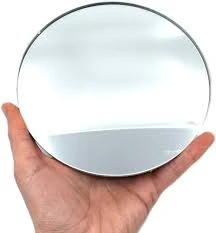

The Benefits of Infrared Reflecting Laminated Glass
As advancements in building materials technology continue to evolve, infrared reflecting laminated glass has emerged as a prominent choice for architectural designs and energy-efficient solutions. This innovative glass type not only enhances the aesthetic appeal of structures but also plays a crucial role in improving energy efficiency and occupant comfort.
Infrared reflecting laminated glass is specifically engineered to reflect a significant portion of infrared radiation while allowing visible light to pass through. This unique property makes it an excellent option for buildings that require ample natural light without compromising on thermal comfort. Traditional glazing solutions often lead to overheating during warmer months, a challenge that infrared reflecting laminated glass effectively mitigates.
One of the primary benefits of this glass is its ability to significantly reduce energy consumption. By reflecting unwanted infrared radiation, it keeps indoor spaces cooler in the summer, resulting in lower reliance on air conditioning systems. This not only decreases energy bills for building occupants but also reduces the carbon footprint of the facility. Over time, the cumulative savings and environmental benefits make infrared reflecting laminated glass an economically wise investment.

In addition to energy efficiency, safety and security are paramount considerations in modern architecture. Laminated glass is known for its resilience and strength; it consists of two or more layers of glass bonded together with a polymer interlayer. This construction enhances not only impact resistance but also sound insulation. Consequently, buildings that incorporate infrared reflecting laminated glass benefit from a quieter indoor environment, which is particularly advantageous in urban areas with high noise levels.
Furthermore, the aesthetic versatility of infrared reflecting laminated glass allows architects and designers to challenge traditional perceptions of glass facades. Available in a variety of colors and finishes, it can be tailored to fit the visual identity of any building project while maintaining its functional benefits. The ability to customize this glass type means that it complements a wide range of architectural styles, from contemporary to classical.
The durability of laminated glass is another feature that cannot be overlooked. Its layered structure makes it less prone to breakage compared to regular glass, thus enhancing safety in both residential and commercial spaces. The interlayer also acts as a barrier, holding shards together in the event of breakage, further reducing the risk of injury. This characteristic promotes peace of mind for both builders and occupants.
In conclusion, infrared reflecting laminated glass stands out as a multifaceted solution for modern architecture. Its energy-saving properties, safety enhancements, aesthetic appeal, and durability make it an ideal choice for a wide range of applications. As society grows increasingly aware of environmental issues and sustainability practices, adopting such innovative materials will undeniably shape the future of building design, paving the way for smarter, more efficient, and visually striking structures. Whether for commercial use or residential comfort, the advantages of infrared reflecting laminated glass are hard to overlook, making it a key player in the landscape of modern construction.